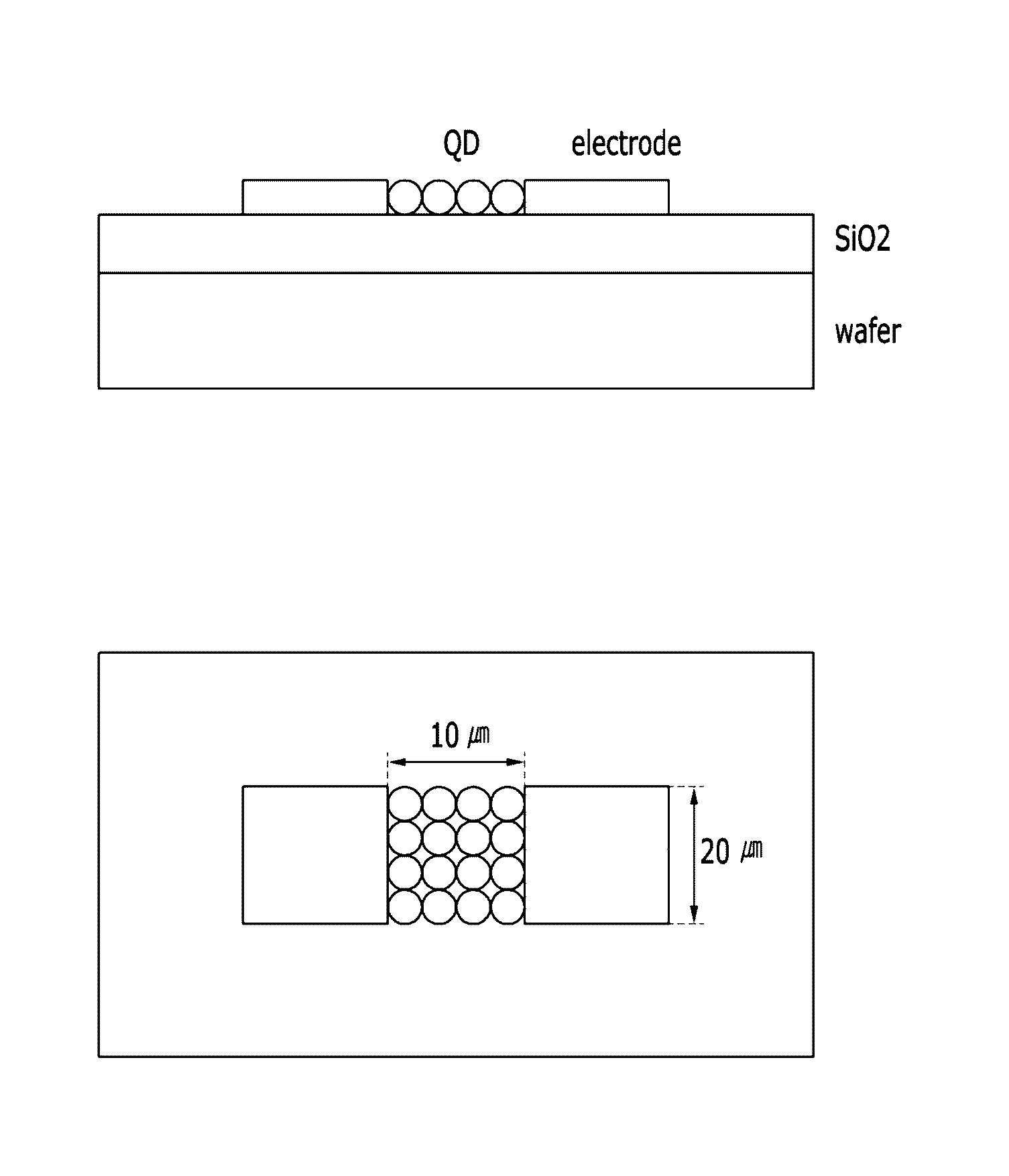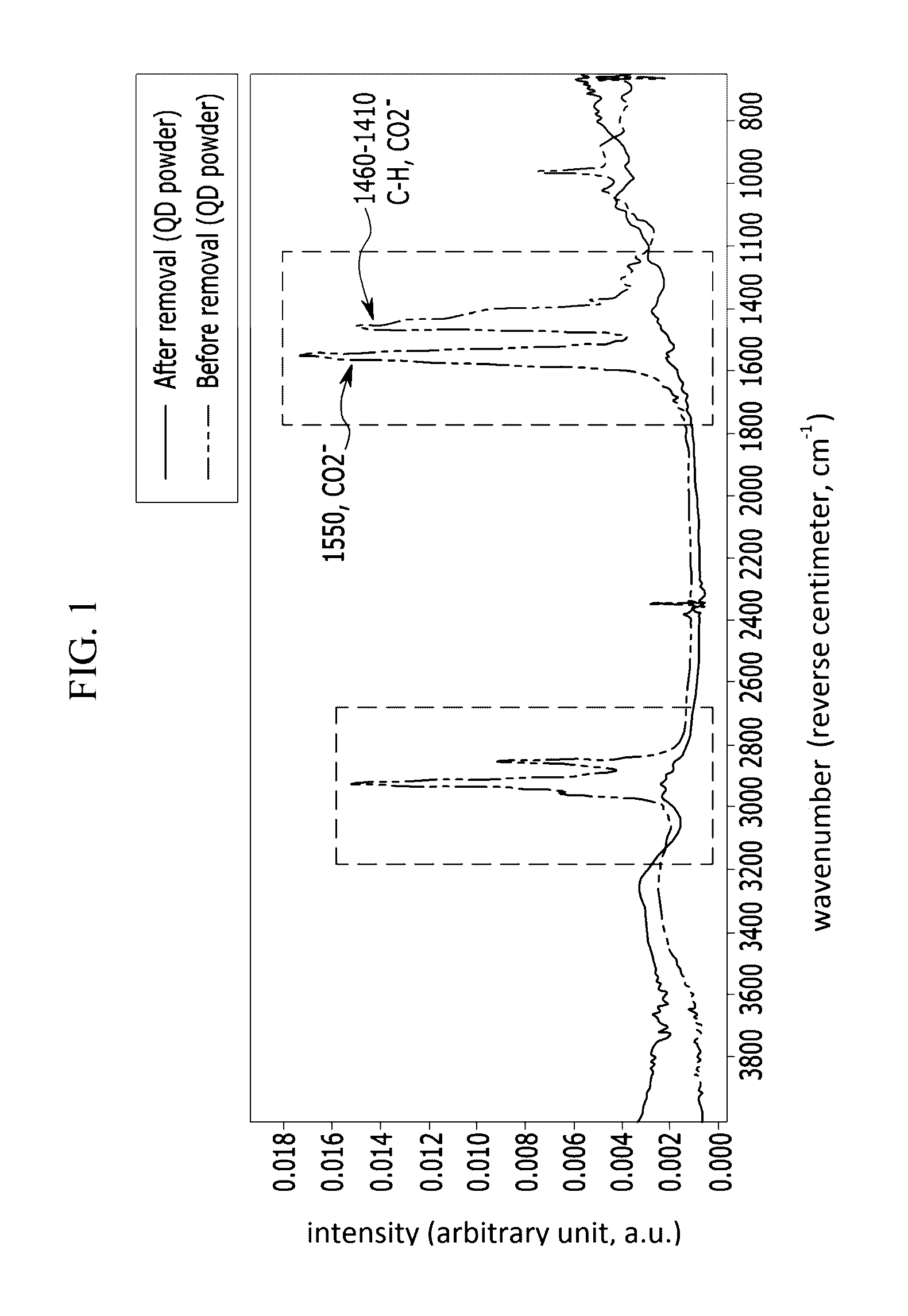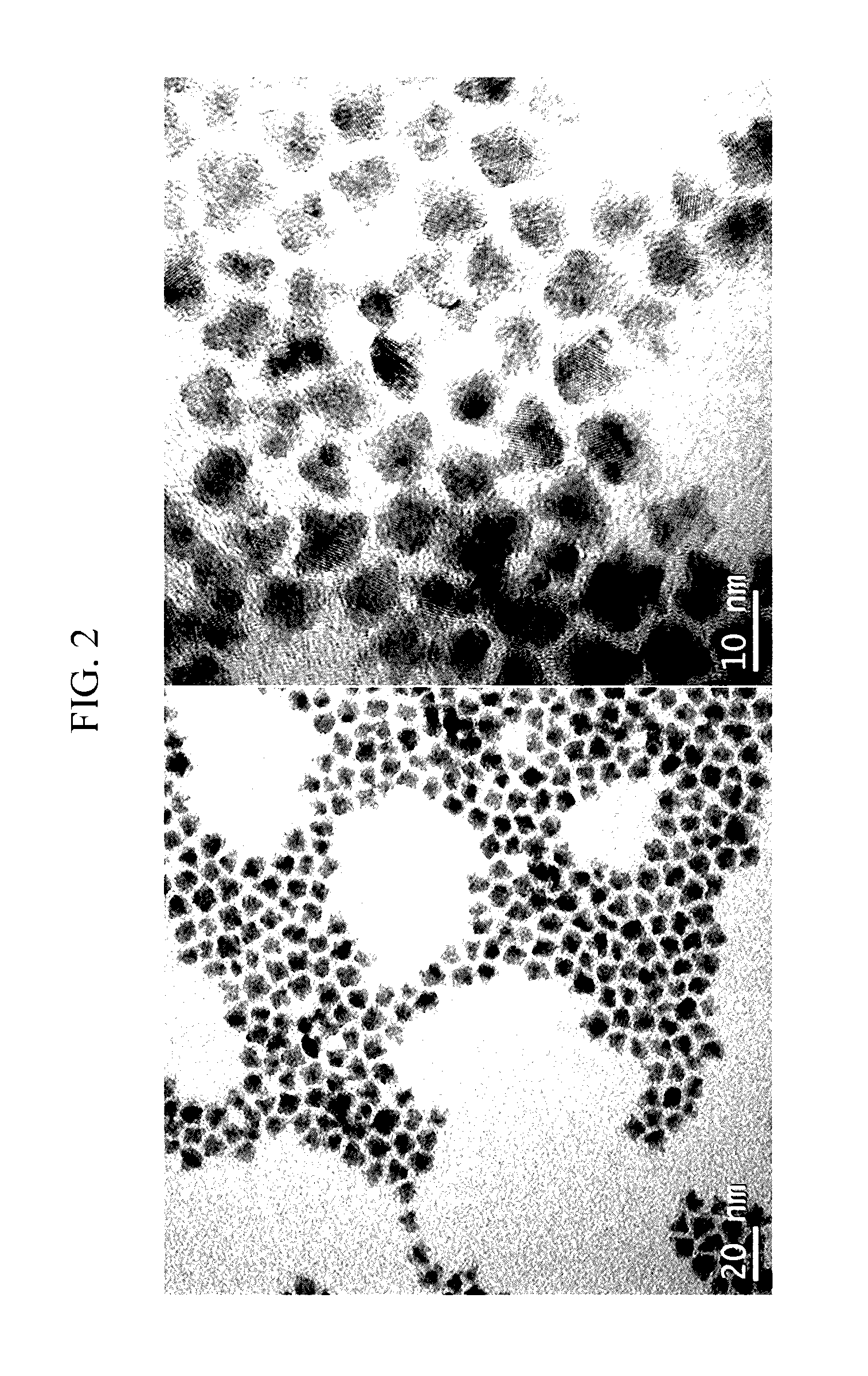Methods of removing surface ligand compounds
a surface ligand and compound technology, applied in the direction of selenium/tellurium compounds with other elements, cleaning using liquids, transportation and packaging, etc., can solve the problems of detrimental effect of particle performan
- Summary
- Abstract
- Description
- Claims
- Application Information
AI Technical Summary
Benefits of technology
Problems solved by technology
Method used
Image
Examples
example 1
Removing Ligand from the Surface of the Nanocrystal Particles in a Powder Form
[0125]An alcohol solution of tetramethyl ammonium hydroxide (conc.: 25 wt %, manufactured by Sigma-Aldrich Co., Ltd.) is obtained. The nanocrystals dispersed in toluene (prepared in Reference Example 1) are precipitated in methanol and separated by centrifugation, which is then dried to prepare nanocrystals in a powder form. The alcohol solution of tetramethyl ammonium hydroxide is applied onto the nanocrystals by adding the solution by drops thereto. The nanocrystals having the solution applied thereto are heated to 200° C. in air or in an inert gas atmosphere.
[0126]An FT-IR analysis is made for the nanocrystals as prepared in Reference Example 1 (prior to the foregoing treatment) and the nanocrystals as treated in the foregoing manners using Varian 670-IR, and the results are shown in FIG. 1. The results of FIG. 1 confirm that the treated nanoparticles have no peaks for the ligand compound, which were ob...
example 2
[0129]The organic ligand is removed by the same treatment method as Example 1, except that the CdSe / CdS / ZnS nanoparticles of Reference Example 1 are disposed on a Si wafer by spin coating to form a film including the CdSe / CdS / ZnS nanoparticles with a thickness of 60 nm.
[0130]Photoluminescence (PL) spectrums for the films prior to and after the ligand removal treatment are obtained using a UV-vis spectrometer (Varian Cary 5000) and a fluorometer (Fluorolog JOBIN YVON Horiba). From the results, it is confirmed that substantially no changes are made in the PL spectrums for the films prior to and after the ligand removal treatment. These results imply that the ligand removal treatment bring about no substantial changes in the crystal structure and quantum confinement effect of the CdSe / CdS / ZnS nanocrystal (i.e., the ligand may be removed without changing the characteristics of the nanoparticles).
example 3
Removing the Ligand Surrounding Gold Nanoparticles from the Surface of the Monolayer Film Thereof
[0131]An alcohol solution of tetramethyl ammonium hydroxide (conc.: 25 wt %, manufactured by Sigma-Aldrich Co., Ltd.) is obtained.
[0132]Gold nanoparticles having dodecanethiol surrounding a surface thereof (manufactured from Ocean nanotech Co., Ltd.) are dispersed in chloroform, and a Cu grid is immersed in the resulting dispersion to form a monolayer of gold nanoparticles on the Cu grid. The alcohol solution of tetramethyl ammonium hydroxide is applied onto the nanoparticles by adding the solution by drops thereto. The nanoparticles having the solution applied thereto are heated to 150° C. in air or in an inert gas atmosphere.
[0133]The nanoparticles prior to and after the treatment are subjected to transmission electron microscopic analysis using a TEM instrument
[0134](FEI / TECNAI F20 G2 200 kV), and the results are shown in FIG. 5 and FIG. 6. The results of FIG. 5 and FIG. 6 confirm tha...
PUM
| Property | Measurement | Unit |
|---|---|---|
| size | aaaaa | aaaaa |
| temperature | aaaaa | aaaaa |
| size | aaaaa | aaaaa |
Abstract
Description
Claims
Application Information
 Login to View More
Login to View More - R&D
- Intellectual Property
- Life Sciences
- Materials
- Tech Scout
- Unparalleled Data Quality
- Higher Quality Content
- 60% Fewer Hallucinations
Browse by: Latest US Patents, China's latest patents, Technical Efficacy Thesaurus, Application Domain, Technology Topic, Popular Technical Reports.
© 2025 PatSnap. All rights reserved.Legal|Privacy policy|Modern Slavery Act Transparency Statement|Sitemap|About US| Contact US: help@patsnap.com



